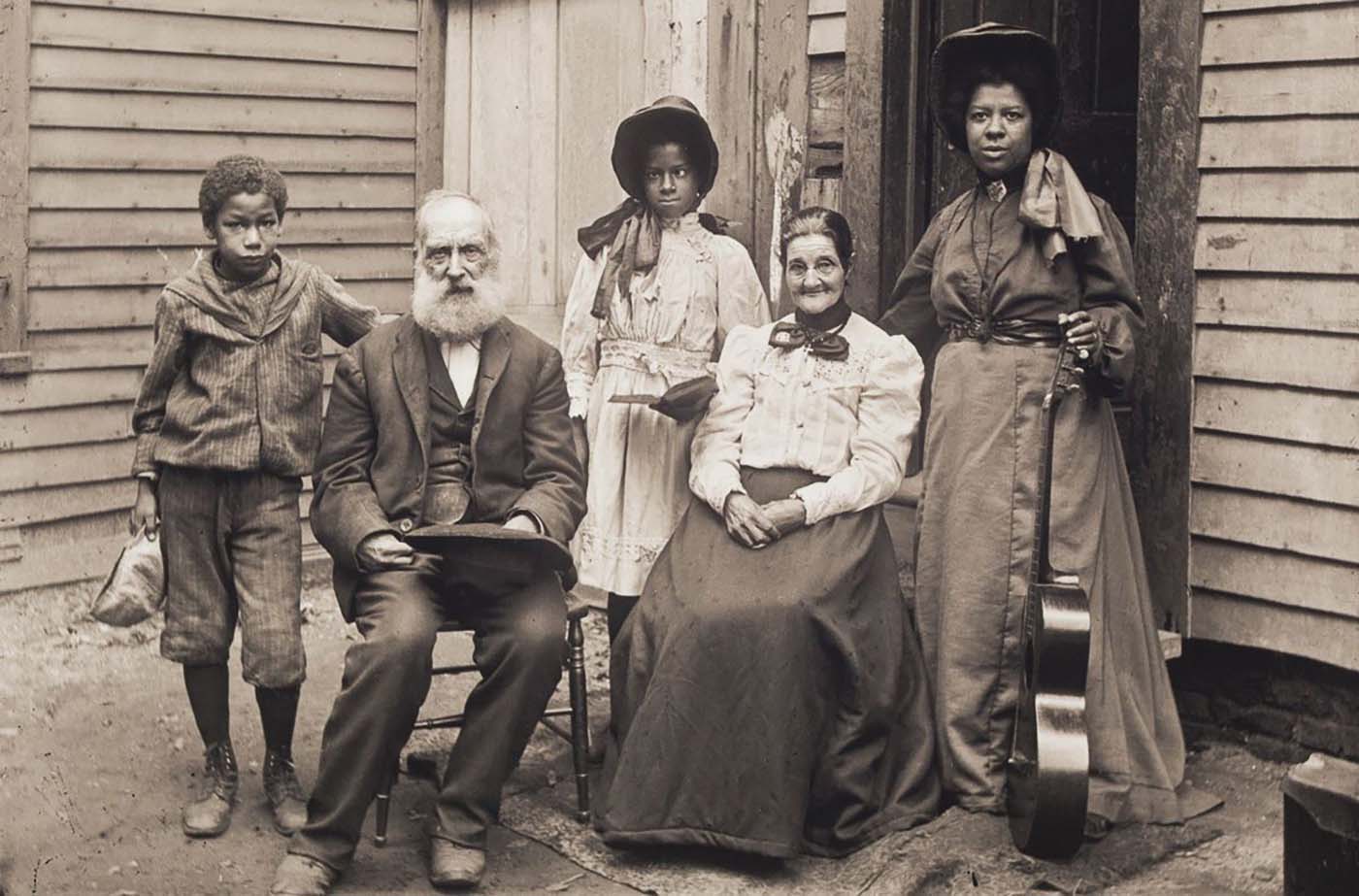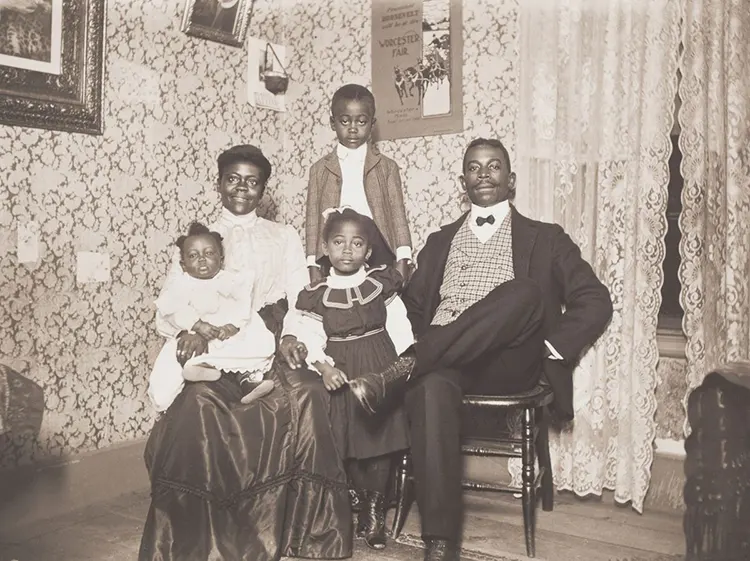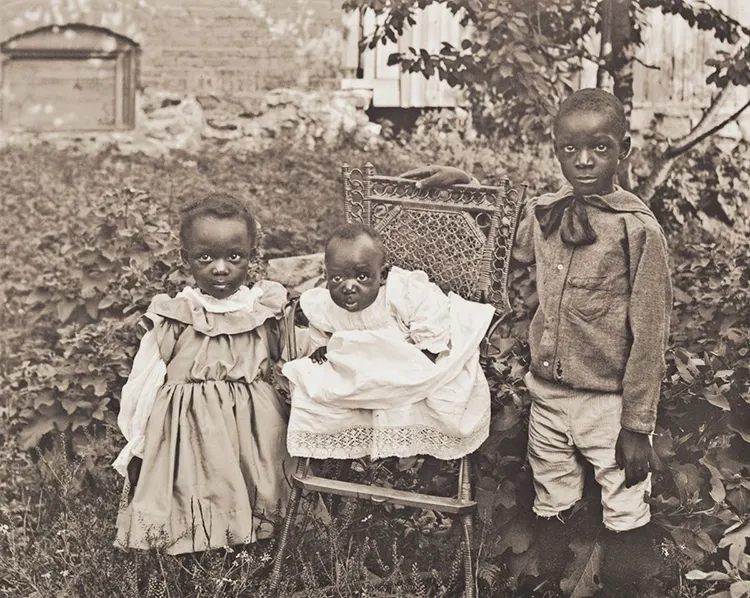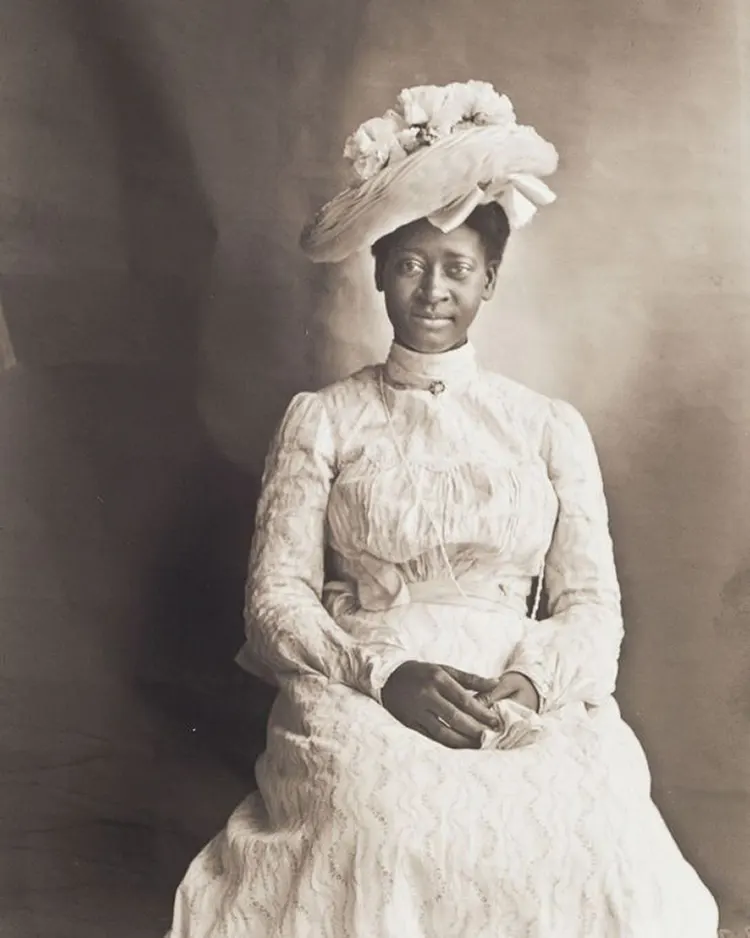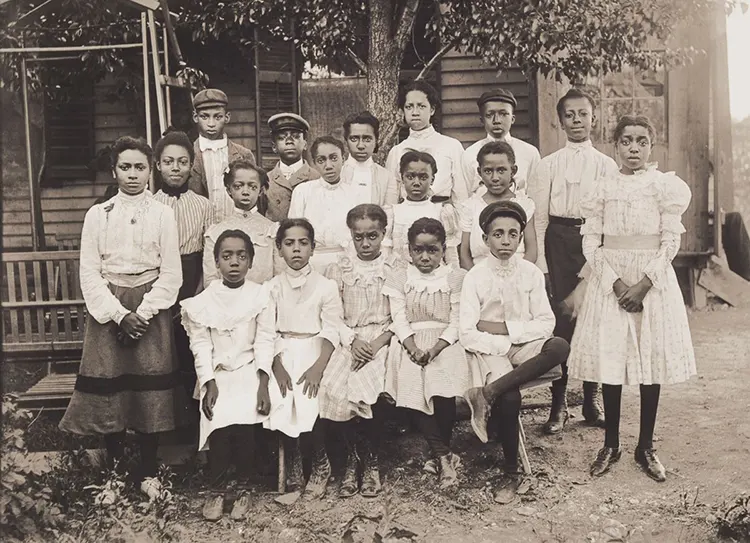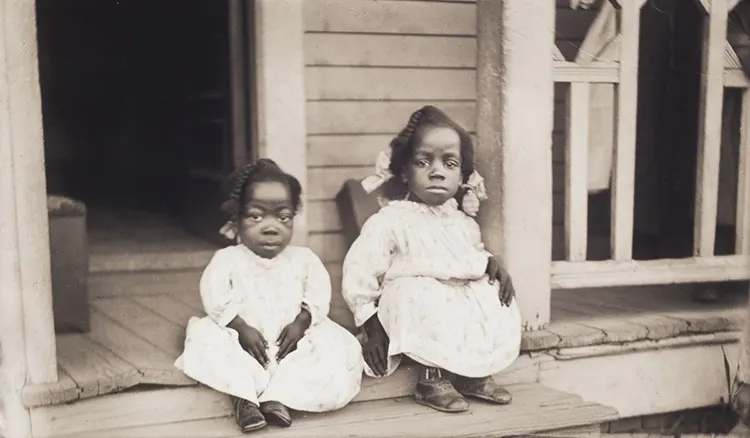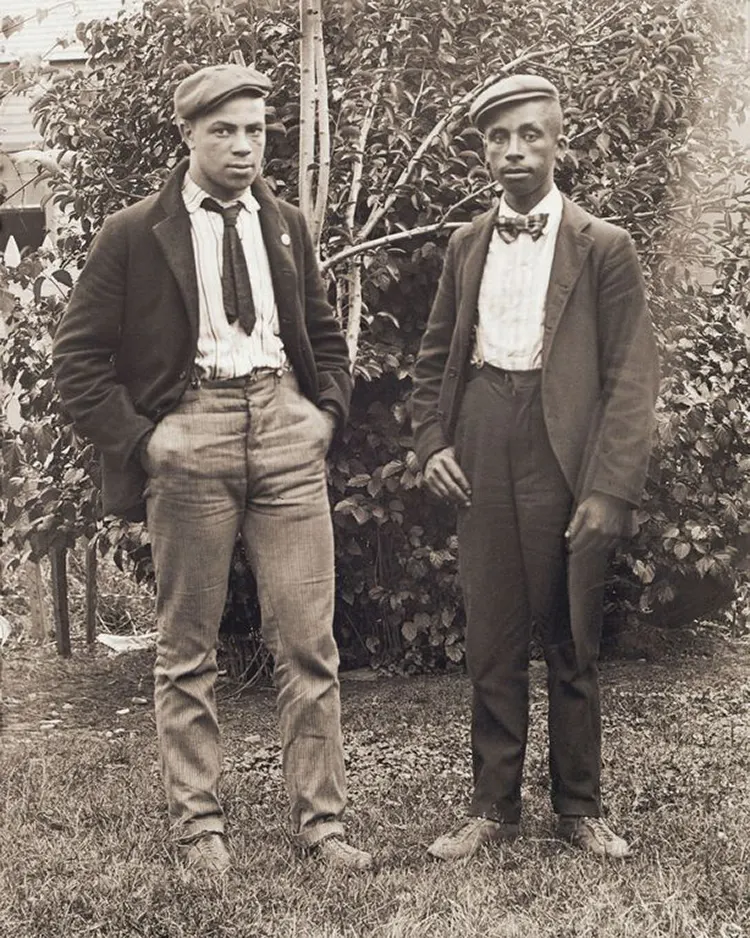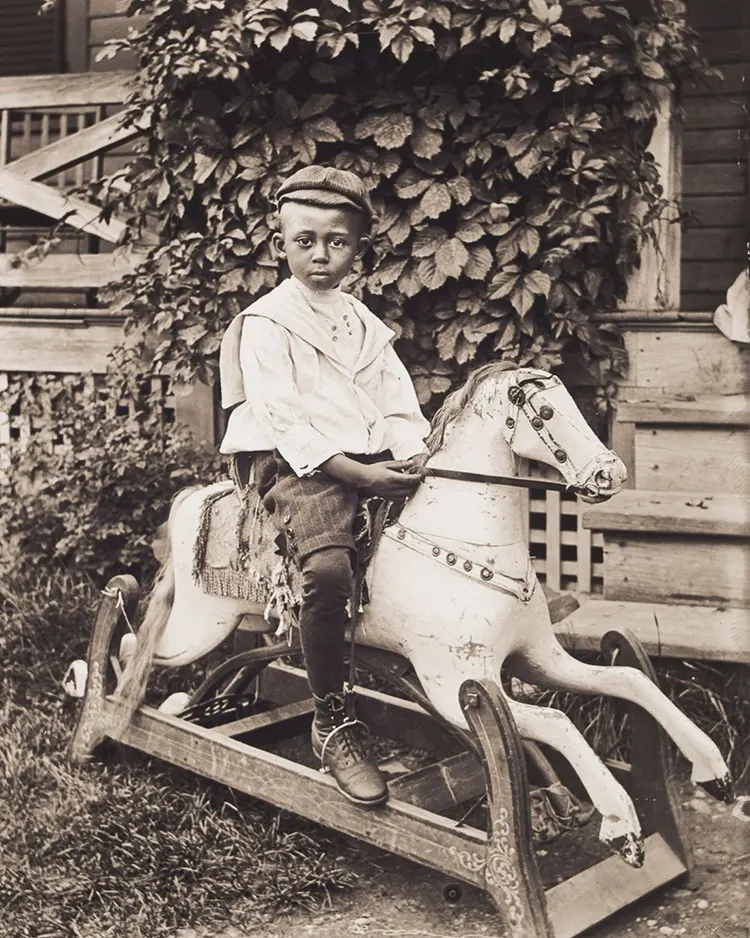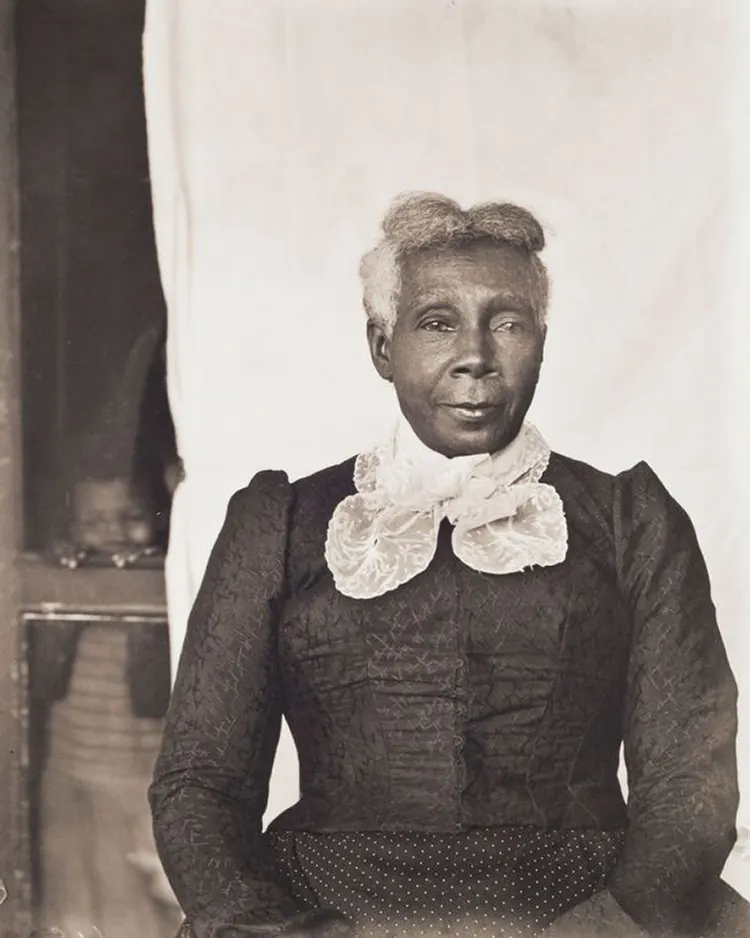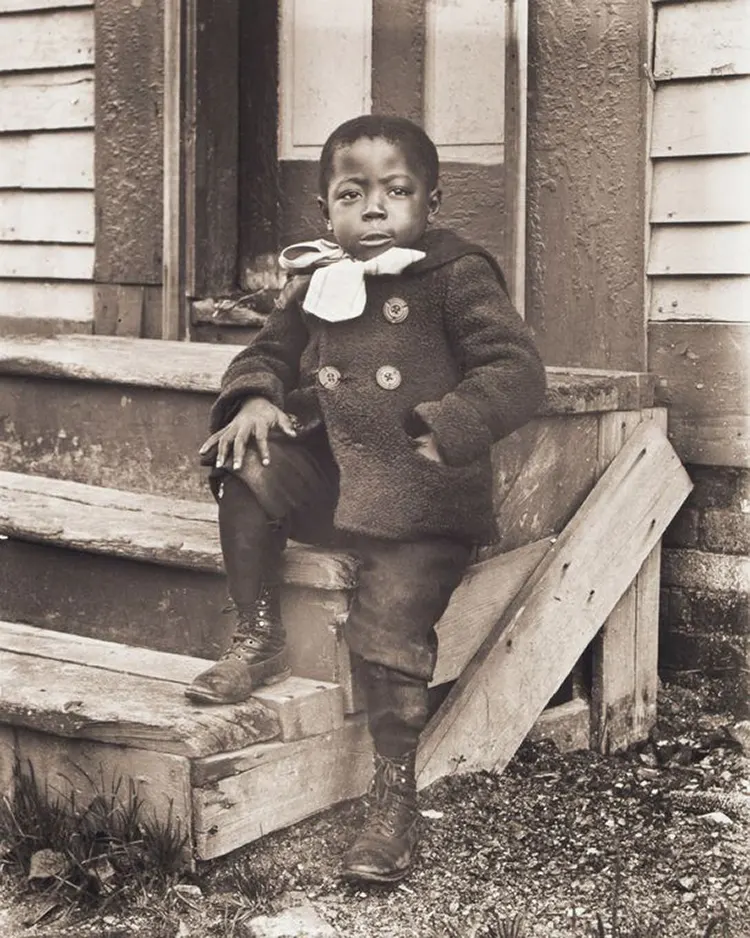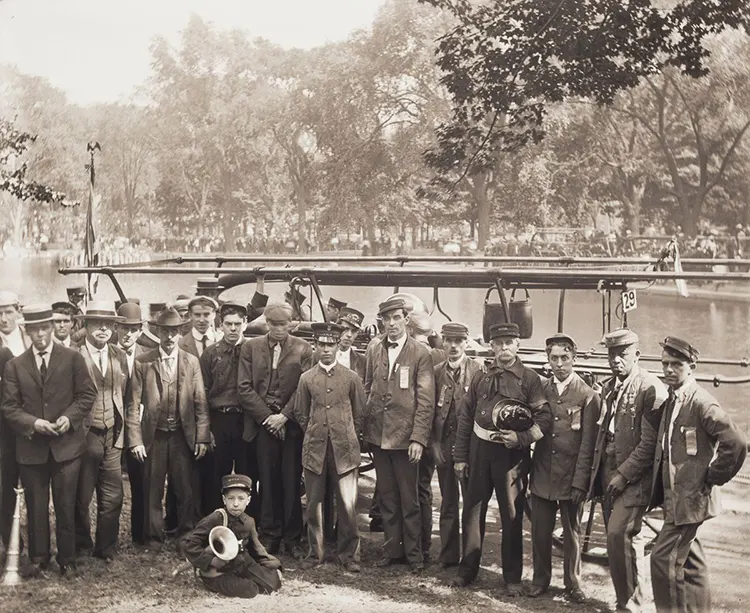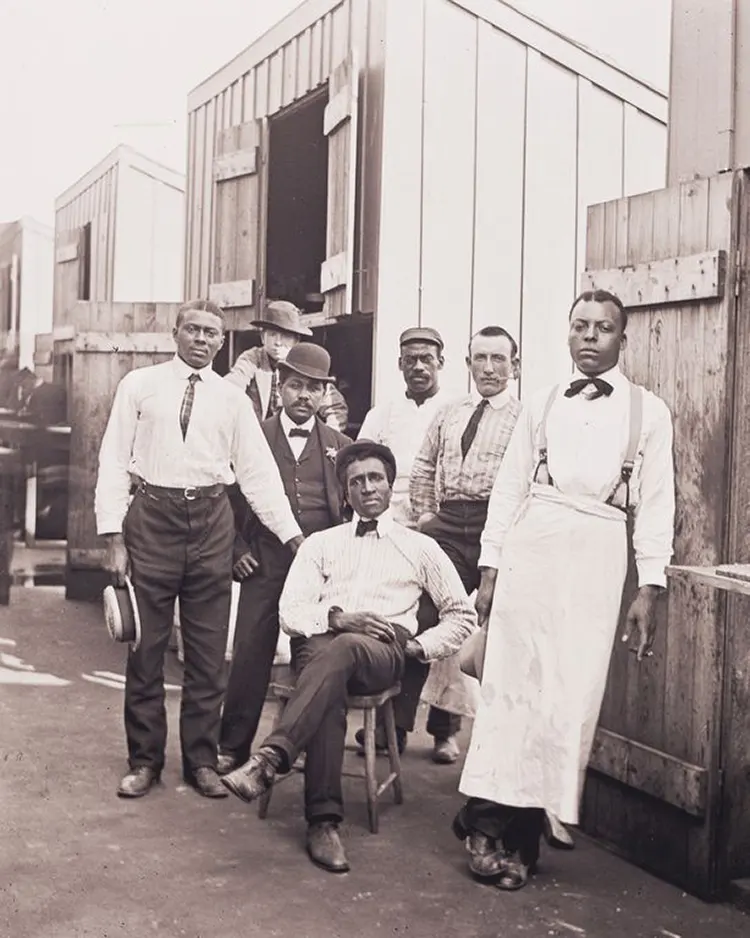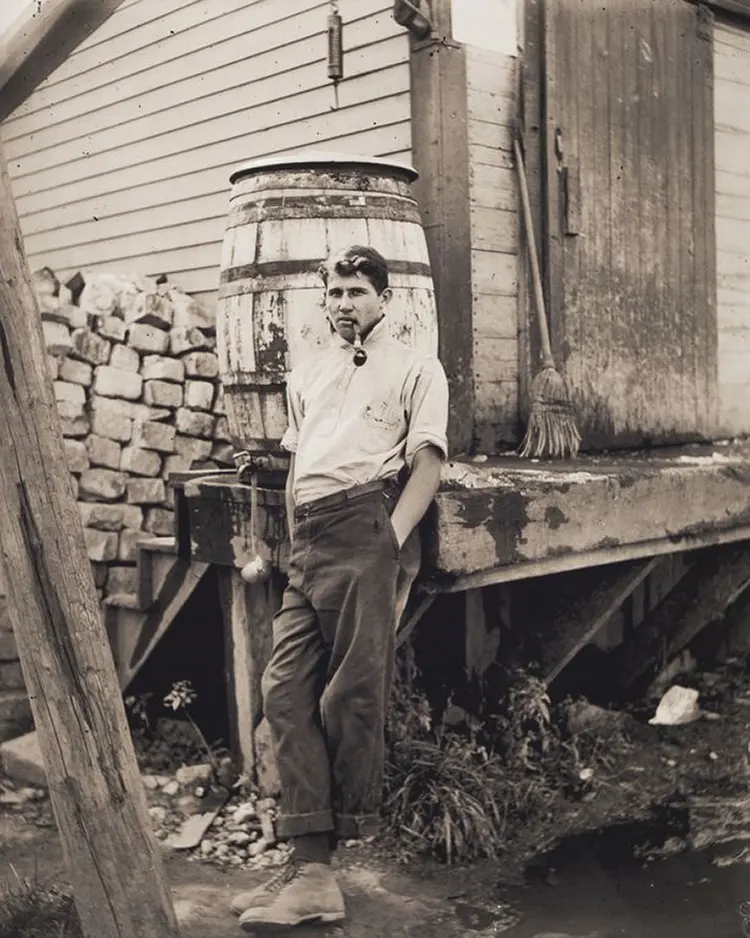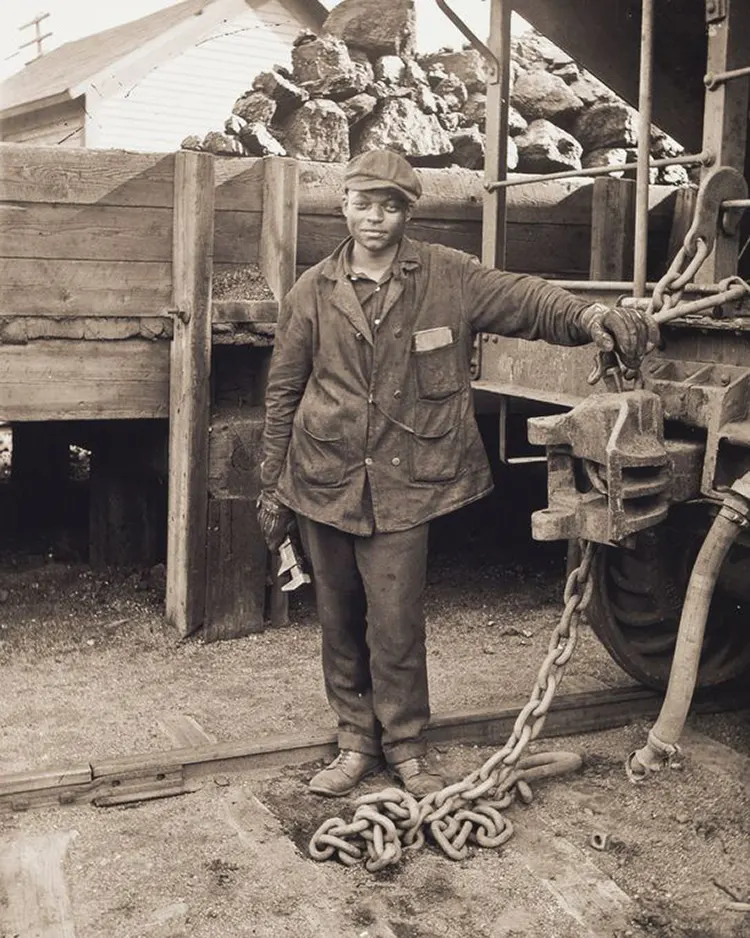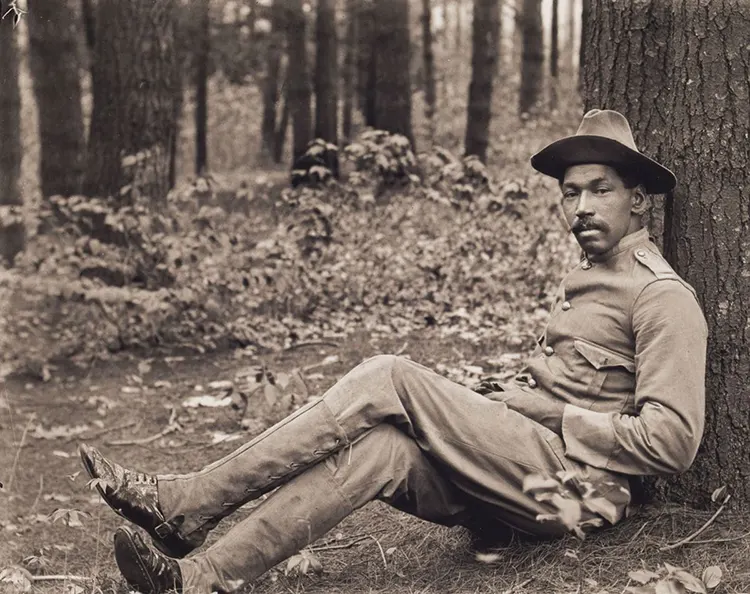William Bullard, born in Worcester, Massachusetts, worked as a photographer without a studio, visiting clients around the town with his camera strapped to his bicycle. From 1897 to 1917, Bullard, who was white, took portraits of his predominantly black and Native American neighbors capturing them in their yards, gardens, and living rooms. Bullard identified over 80% of his sitters in his logbook, making this collection especially rare among extant photographic collections of people of color taken before World War I and enabling the photographs to tell specific stories about individuals and recreate a more accurate historical context. Moreover, Bullard’s portraits examine the role of photography as the vehicle for a “new Black identity” during the nascent years of the Black movement. Offering a photographic narrative of migration and resettlement in the aftermath of Emancipation and Reconstruction, Bullard’s portraits address larger themes involving race in American history, many of which remain relevant today, notably, the story of people of color claiming their rightful place in society as well as the fundamentally American story of migration, immigration, and the creation of a community in new surroundings. The photos, and the stories of the families featured in them, are presented in “Rediscovering an American Community of Color: The Photographs of William Bullard” an exhibition at the Worcester Art Museum. Bullard also traveled far beyond Worcester—by trolley, train, and wagon—to forty-five different communities around New England and as far afield as Buffalo, New York. His subjects reflect his wide-ranging interests—portraits, streetscapes, trains, trolleys, parades, and military encampments. It is still an open question as to where Bullard acquired his superior skill in photography but he appears to be self-taught, as he has not been found listed as an apprentice to any master photographers. Remarkably, he scratched numbers into approximately 980 of the 5400 negatives and then wrote a corresponding number and description in his logbook, which survived with the negatives. His logbook has a few notations that indicate he received money for some of the prints but detailed records of the profitability of his work do not exist. There is, however, evidence that he worked as a school photographer in Holden, Worcester, and the Brookfields. Bullard never married and lived with his mother and at least one brother his entire life. His death, by suicide, came in late April 1918 when he was 41. He was found by his brothers, Marcus and Herbert, as he had not been seen for a few weeks and they went to look for him. According to his obituary, he had been depressed and in ill health and for many months had not been active in his trade. That combined with the very recent passing of his mother Ellen appears to have been what led to his suicide. (Photo credit: William Bullard, Courtesy of Frank Morrill, Clark University and Worcester Art Museum / The Citizen Chronicle / Wikimedia Commons / Mashable). Notify me of new posts by email.
Δ Subscribe
